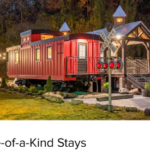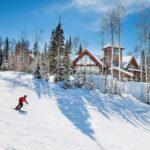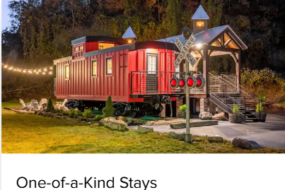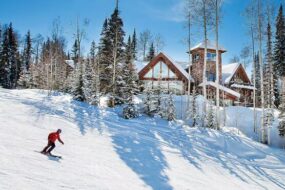We all have a rudimentary understanding of what hiking and trekking entail. If you mistakenly assumed that hiking and trekking were the same thing and recently discovered that this isn’t the case, don’t panic; you’re not alone. With this post, you can learn more about what makes them unique and how you may better prepare yourself to go on your own adventure when you choose these experiences.
What Is Hiking?
Hiking’s description includes the term “walk,” which is often associated with anything joyous, simple, and pleasurable. So, when someone says “hiking,” they’re usually referring to a pleasant day trek or a multi-day hike that isn’t too strenuous and shouldn’t cause too many problems.
What Is Trekking?
The word “trek” comes from the Afrikaans word “migration,” which means “movement.” While it used to refer to leaving home for several days with only your trekking essentials and equipment on your back and sleeping in a tent for protection, it is now used to refer to the activity of hiking, which involves walking in a variety of environments ranging from mountains to deserts to cities.
Difference Between Hiking And Trekking
Hiking, to put it another way, is a long, vigorous walk in a natural setting on hiking routes or footpaths for a day or overnight. Trekking entails a multi-day, strenuous walk in the wild natural setting. It’s possible to accomplish it off the beaten path.
Health Benefits Of Hiking And Trekking
Both hikes and treks can involve all sorts of terrain though, and the whole point of either tends to be that you get out into great natural beauty. And health benefits? Numerous!
- Hiking and trekking can lower the risk of heart disease and improve your blood pressure.
- These activities build up strength in your thighs, lower leg muscles, hip muscles and hamstrings.
- The hearty exercises help you keep away from stress, depression and anxiety.
- Spending time outdoors and soaking all the Vitamin D from the sunlight can improve your mind.
- Like all physical activities, they develop your bones, reduce the risk of osteoporosis, increase your cardiovascular and respiratory capacities, strengthen your immune system, and improve your muscular capacity.
Things To Carry For A Hiking And Trekking Trips
Are you planning a hiking or trekking vacation outside of town? Your trekking and hiking necessities are largely determined by your skill level, as well as the environment you choose, weather conditions, and other factors. For your trek, you’ll need to modify your gear. The Mountaineers, a Seattle-based group for climbers and outdoor adventurers, compiled the first Ten Essentials list in the 1930s to help people be prepared for emergencies in the outdoors. While the list has evolved throughout time, the system has stayed unchanged.
1. Navigation
Chances are that your hikes and treks are guided with the ways paved for you; however, making sure to carry a few navigational essentials will only help you experience the wilderness better.
This 50 Multi-purpose Whistle And Orienteering Compass will be your multi-purpose best friend. A compass to guide you, a whistle for protection, a thermometer and a magnifying glass to analyse flora and fauna will keep things fun and going.

2. Headlamp
Trust us, you want to be holding the least amount of things in your hand while trekking especially! Needing all your limbs for balance and sturdiness, make use of your head. Being able to find your way through the wilderness at night is essential, so you always need to have a light source with you. A headlamp is the preferred choice of most adventurers. And remember to always carry extra batteries.

3. Sun Protection
Always pack with you and wear sunglasses, sun-protection clothing and sunscreen. Not doing so can result in sunburn or snow blindness in the short term and potentially premature skin ageing, skin cancer and cataracts in the long term. These Polarised Adult Sunglasses with Anti-UV lenses block 100% of harmful rays and category 3 protects you from glare. Ideal for hiking, the technology of polarising lenses means you better distinguish the contours and contrasts.
Suitable for kids and adults, this sunscreen offers hydration and water resistance. Easy application with the new roll-on format, apply the sunscreen generously and thoroughly to all exposed skin. UV rays can reflect off of snow and water so don’t forget to get spots like the underside of your chin and nose.

4. Clothing
Next on the list, sun protection clothing. Clothing can be an effective way of blocking UV rays from reaching your skin without having to slather on sunscreen. There will be a couple of changes in the packing routine when it’ll come to hiking vs trekking. A hat, preferably one with a full brim, is a key accessory for sun protection. This waterproof one from Decathlon is perfect for your trekking and hiking experiences. While the laser perforations on the top of the hat let air circulate, the 3-layer fabric with a ripstop weave offers greater tear resistance.
Offering you comfortable with its warm fleece inner and water-repellent outer fabric, these water-repellent trousers will provide heat and protection during your hikes in very cold weather. The straight fit, elasticated waistband and flat adjustable buckle offer freedom of movement.
While your regular cotton t-shirts should suffice for beginner level hikes, you might want to opt for one that covers your body more for better protection from the sun. This Men’s long-sleeved mountain Hiking t-shirt is ideal for the morning chill or when up a summit. This t-shirt will win you over with its absorbent and moisture-wicking qualities. A pair of modular pants that can be converted into shorts are a staple when it comes to trekking. These Men’s Travel Trekking Trousers are designed so that you can travel the world with confidence, whatever the environment. With many pockets (4) to carry your essentials, these trousers are ideal for their durability and comfort as well. The front and rear reinforcement zones which are water-repellent and breathable, quick-drying fabric makes it super comfortable.

This Mountain Trekking Padded Jacket combines warmth, lightweight and durability. The technical advances applied to this padded jacket make it compact and thin while keeping you warm. This jacket will be your buddy keeping you comfortable in extremely cold temperatures as well (down to -5°C). Eco-designed, wadding made from 70% recycled polyester, making it great for you and the environment!
This RDS-certified Down And Feather Jacket is another great option to keep you warm on bivouac between +5° and -5°C. Warm and lightweight, it is the most compressible of our down jackets and takes up less space in your backpack so you can travel light. The surface of the outer fabric is water repellent to prevent water from getting in and protecting you.
As for shoes, you must leave your regular running shoes at home and go for an activity-specific pair. Shoes that offer adequate ankle support are the key here to prevent any unwanted twists and injuries.
5. First Aid
It’s vital to carry and know how to use the items in a first-aid kit. Any kit should include treatments for blisters, adhesive bandages of various sizes, several gauze pads, adhesive tape, disinfecting ointment, over-the-counter pain medication, pen and paper.
6. Knife
Knives are handy for gear repair, food preparation, first aid, making kindling or other emergency needs, making them essential for every outing. Every adult in your group should carry a knife.

7. Fire
In case of an emergency, you need to have reliable supplies with you for starting and maintaining a fire. For many people, this is a disposable butane lighter, but matches are also suitable so long as they are waterproof or stored in a waterproof container.

8. Emergency Shelter
Always carry some type of emergency shelter to protect you from wind and rain in case you get stranded or injured on the trail. Options include a raincoat or a poncho, a blanket or even a large plastic trash bag.
Not an emergency but equally necessary is a sleeping bag. This Trekking Mummy Sleeping Bag is designed to sleep comfortably at temperatures of 0°C or above. This very compact, lightweight bag has a wide temperature range of use. Sleep sound from 0° to 5°C thanks to these 2 3/4 zips with a double slider to manage the temperature.

9. Food And Water
Carrying at least an extra day’s worth of food in case something causes your trip to go long is always a good idea. Things like extra energy bars, nuts, dried fruits or even cup noodles are good. It’s also crucial to carry enough water for your outing and have some method of treating water while you’re out there, whether that’s with a filter/purifier, chemical treatment or a stove for melting snow.

10. Trekking Bag
Easy to adjust, this 50L Trekking Backpack offers simplicity and comfort without giving up its technical features. With holders to carry your water bottle, pole-holder and rain cover, it is a versatile bag to keep things easy-peasy.

Decathlon is a one-stop destination for all your quality sports and travel goods. We promise to accompany you to all your adventures in the form of gears for a more than satisfactory experience. From trekking gear to hiking, find all your travel requirements at Decathlon.









